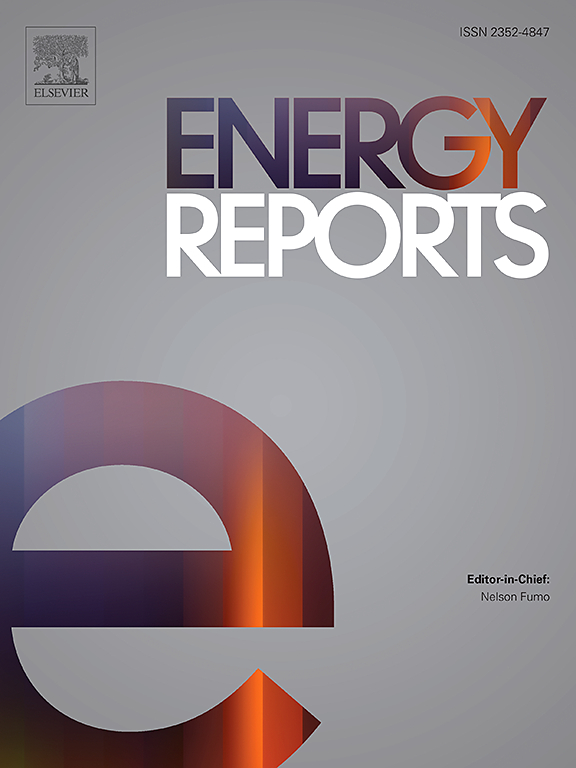基于自适应势垒函数全局快速终端滑模控制方法的风力发电机组最大功率跟踪
IF 5.1
3区 工程技术
Q2 ENERGY & FUELS
引用次数: 0
摘要
当风力涡轮机在低于额定风速的区域运行时,它必须跟踪所需的转子转速以最大限度地捕获能量。然而,不确定性和未知干扰会影响风力发电机跟踪该期望值的速度和精度。针对这一问题,本文提出了一种自适应障函数全局快速终端滑模控制方法,该方法具有鲁棒性和快速收敛性。全局快速终端滑模在滑模动态设计中结合了传统滑模和终端滑模的特点,保证了系统状态在有限时间内收敛,并保证了风电机组期望参数的跟踪速度。该方法引入势垒函数,其固有性质降低了系统对不确定性上界设置的依赖,减轻了抖振现象,保证了控制精度。在阶跃风速、随机风速和湍流风速三种风速条件下,本文方法与另外两种方法的控制性能进行了比较。综上所述,该方法的期望转子转速平均沉降时间为其他方法的6.94 %。该方法跟踪风力机参数的平均最大误差为7.89 %,波动幅度为其他方法的10 %。该方法有效地提高了风力机的动态性能和精度。本文章由计算机程序翻译,如有差异,请以英文原文为准。
Maximum power tracking of a wind turbine using an adaptive barrier function global fast terminal sliding mode control approach
When a wind turbine operates in a region below the rated wind speed, it must track the desired rotor speed to maximize energy capture. However, uncertainties and unknown disturbances affect the speed and accuracy of the wind turbine in tracking this desired value. To address this issue, this paper proposes an adaptive barrier function global fast terminal sliding mode control method, recognized for its robustness and rapid convergence. The global fast terminal sliding mode combines the characteristics of traditional sliding mode and terminal sliding mode in the dynamic design of sliding mode, ensuring that the system state converges within a finite time and the tracking speed of the desired parameters of the wind turbine. The method introduces a barrier function whose intrinsic properties reduce the system's dependence on the uncertainty upper-bound setting, alleviate the chattering phenomenon, and guarantee the control accuracy. Furthermore, the control performance of the proposed method is compared with the two other methods in this paper under three wind speed conditions: step, random, and turbulent. In conclusion, the average settling time for the desired rotor speed of the proposed method is 6.94 % of other methods. The average maximum error and fluctuation range of the proposed method in tracking wind turbine parameters are 7.89 % and 10 % of other methods, respectively. The proposed method effectively improves the dynamic performance and accuracy of the wind turbine.
求助全文
通过发布文献求助,成功后即可免费获取论文全文。
去求助
来源期刊

Energy Reports
Energy-General Energy
CiteScore
8.20
自引率
13.50%
发文量
2608
审稿时长
38 days
期刊介绍:
Energy Reports is a new online multidisciplinary open access journal which focuses on publishing new research in the area of Energy with a rapid review and publication time. Energy Reports will be open to direct submissions and also to submissions from other Elsevier Energy journals, whose Editors have determined that Energy Reports would be a better fit.
 求助内容:
求助内容: 应助结果提醒方式:
应助结果提醒方式:


